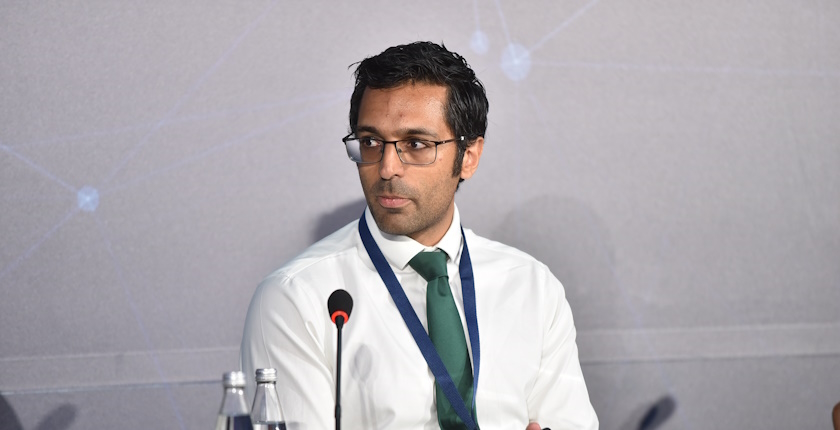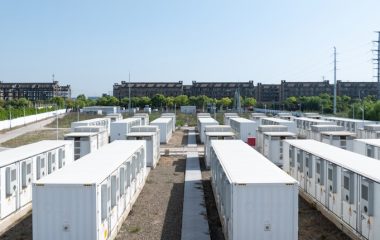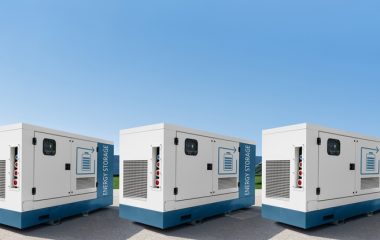
Photo: Balkan Green Energy News
There are exponential opportunities ahead for energy storage investments with the rise in seasonal demand and the need for flexibility, thermal energy and electricity grid services. Diverse and complementary purposes are at hand to facilitate the green transition, the representatives of main developers and operators in Southeast Europe said at Belgrade Energy Forum.
The European Union is determined to accelerate the development of energy storage markets with ample subsidies. Enormous underground water heaters and capacitors at major transmission substations all qualify as batteries.
They are becoming essential for balancing electricity demand and supply, because the wind and sun are largely unpredictable, so-called intermittent energy sources, dependent on the weather. Investors and other panelists with various backgrounds and expertise agreed at a panel on batteries at Belgrade Energy Forum that there is progress in terms of legislation, costs and financing. However, they require banks to participate more in the endeavor.
Banks are warming up to battery energy storage projects
Senior Associate Panos Kefalas of Aurora Energy Research moderated the discussion. In his view, supported by the other participants, stability and predictability are crucial for the installation of both merchant and subsidized assets. The authorities need to help investors become more confident in revenue streams, to provide a business case, the analyst pointed out.
He highlighted the role of long-term contracts or, for the balancing market, more accurate risk assessment. One year ago, financing batteries was still a no-go but now many banks are eager to tap into the opportunity, Kefalas said.
“Current power systems can only handle a specific amount of renewables before they need significant changes in the way they operate, both technically and in terms of power market design. And energy storage is going to be one of the pillars for realizing all these decarbonization agendas,” he stated. The energy storage sector is only starting in the Western Balkans, and with decarbonization on the agenda, the kinds of challenges that more mature markets are facing are about to emerge, he explained.

Clarity over subsidies
Director of Janom Energy and Battery Matej Šanta categorized janom Investments as a mid-sized private equity investor. He urged for a stable and predictable legislation and grid access.
Besides the required energy laws, bylaws have to give clear guidelines to regulators to adopt new technologies, Šanta said. Batteries and other storage systems depend much on guidance for the permitting process including grid connection, he underscored.
As for the emergence of storage markets, the representative of Slovakian firm janom Investments highlighted the role of transparent pricing signals, which companies need to calculate project returns.
Companies need transparent pricing signals to calculate project returns
Janom prefers clear and predictable legislation over subsidies, as it allows it to assess its risks in entering a market, according to Šanta. Another major factor is the openness of electricity transmission and distribution system operators (TSOs and DSOs) and regulators, he added. Their task is to adopt grid codes to allow new technologies, for instance independent aggregation, and even some EU countries still lack them.
“As an investor, we are bringing our experience from other markets, namely in Central Europe and, partially, the Nordics. We need local partners to adapt this experience to local conditions,” Šanta stated.

Valkouma: Grid, storage development must match renewables expansion
President and Chief Executive Officer of Faria Renewables Thalia Valkouma said the focus should be on the diversification of storage systems so that different technologies cover all uses. The other major points are expanding the lifespan of such systems and their environmental sustainability, in her words.
Capital expenditure for battery energy storage systems – BESS has been dropping quickly, said Valkouma, whose company is investing and developing projects in Greece and other countries. Faria Renewables was one of the winners at the second battery auction in Greece. It has a strategic target of more than 5 GW.
“We believe that storage is one of the next big things in the energy sector,” she stressed. Valkouma said grid and storage expansion doesn’t match investments in solar and wind power.
It leads to ever-increasing curtailments, particularly in Greece, as well as zero and negative prices, which raises investment risk, she opined. If renewable energy investments drop, it will create a vicious circle, Valkouma warned.

Localized manufacturing strengthens grid security
Rimac Energy is oriented toward designing, developing and manufacturing its battery systems in Southeast Europe including software development, data management and localized support, Director Wasim Sarwar Dilov said at the panel. It helps localize control, he underscored, pointing to the rising risks of grid collapse.
Domestic design and manufacturing not only supports the economy, but then BESS is optimized for the local market’s needs, Sarwar Dilov asserted.
Rimac Energy’s SineStack is a modular and scalable system with a 40% improvement in floor space
Rimac Energy, based in Croatia, has been designing the most technologically advanced battery energy storage system in the world, he claimed. “Our system is a fully integrated battery energy storage and power delivery solution. We’ve developed a unique inverter architecture and fully incorporated the power electronics and the thermal management systems and all the power distribution,” Sarwar Dilov added.

The SineStack, a modular and scalable system with “a fantastic round trip efficiency,” takes up very little space, he stressed. The improvement in floor space against other available solutions is 40%, plus there are no additional inverters, according to the company presentation.
Each building block has 830 kWh in capacity and the facility can grow to 150 MWh and more, Sarwar Dilov said. Its lifetime is 20 years with multiple cycles every day, he underscored.
Grid services are technically much more challenging than solar batteries
NGEN Group, headquartered in Slovenia, has a total pipeline of more than 1.6 GWh around Europe. Working with Tesla, it has been operating BESS facilities for four years.
The company is developing software for battery storage. Co-founder and CEO Roman Bernard placed emphasis on cybersecurity of any device in the electricity system. “If we lose frequency in the grid, everybody will suffer,” he stressed.
In the BESS segment, grid services are technically much more challenging than storing energy from photovoltaic systems, Bernard said. Their top level is the balancing market for transmission system operators, followed by arbitrage, and next is energy supply as another product, he explained.
The EU has made it clear that it would push for the creation of a balancing market, for which BESS operators need motivation, the head of NGEN Group said.
The bottom line is that 5 GW of solar power at noon needs 5 GW of consumption and storage “to take it out of the grid,” Roman Bernard added.

Seasonal thermal energy storage saves gas in winter months
Electricity producers recently lost an estimated EUR 1.8 million in one day in Hungary as prices at the power exchange were below zero for nine consecutive hours, said the European Bank for Reconstruction and Development’s Principal for Energy Efficiency Bojan Bogdanović. In his view, the sector needs diversification of balancing and energy storage.
Batteries are one part of the solution and irreplaceable for some applications, while seasonal thermal energy storage and coupling electricity with other sectors can contribute significantly, Bogdanović said. The technology is very affordable, he added.
The energy sector requires diversification of balancing and energy storage, says Bojan Bogdanović from the EBRD
Water in underground pits is heated using excess renewable electricity to be used for district heating in the winter season. As gas stocks in Europe are usually the lowest in January and February and the fuel is the most expensive then, such seasonal storage can replace it in heating, shaving off the price peaks. It also leaves more gas available for combined heat and power plants, Bogdanović asserted.
Turning back to the negative prices phenomenon, he concluded that it makes several other energy storage technologies bankable.

Consumers have to adapt to sources to keep system in balance
The results of a simulation at the University of Ljubljana in Slovenia showed that a 5.3 GW battery with a capacity of 1.77 TWh or two full weeks would be needed to balance the country’s annual electricity consumption if it was covered by photovoltaics alone.
The capacity item is equivalent to 16.1% of the 11.01 TWh measured in 2023. The required installed PV power came in at 8.63 GW, said Professor Miloš Pantoš from the Faculty of Electrical Engineering. He is also a member of the Supervisory Board of GEN energija. Notably, Slovenia now hosts 1.1 GW in solar power capacity.

The excersise revealed that, in financial and technical terms, batteries aren’t appropriate, but the technology is developing fast, according to Pantoš.
“The new paradigm is that consumers will have to adapt to the sources to keep the system in balance,” he stated. But while consumer response is already emerging with flexibility markets, Pantoš suggested that solutions are necessary on the production side as well. Within a few years, Slovenia may roll out legislation for a capacity firming mechanism, obligating all electricity generation facilities to include a storage system for stability and reliability, he estimated.









Be the first one to comment on this article.